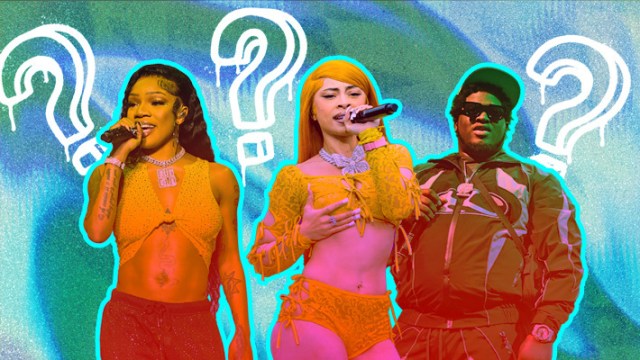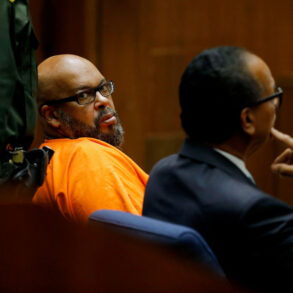
Where did all the new rap superstars go? It’s beginning to appear that the genre’s mainstream struggles are deeper than taking nine months last year to produce its first No. 1 on the Billboard Hot 100. While that wasn’t a problem this year, it’s somewhat telling that the most dominant rapper chart-wise is Kendrick Lamar, a 15+ year veteran, who would be releasing his sixth album this year. So, what happened? Did all the kids finally figure out what Cypress Hill was talking about 20 years ago (pretty much the same thing Chappell Roan said this year) and decide it didn’t sound all that attractive to be a rap superstar? Big house, five cars, sure, but looking over your shoulder constantly? Meh.
It isn’t like there is a dearth of new artists. 310babii, BossMan Dlow, Cash Cobain, Ice Spice, GloRilla, Hunxho, Lola Brooke, Luh Tyler, Rob49, Skilla Baby… The list goes on and on. But while these names and others have been anointed by <em>XXL Freshman columns and viral hits on TikTok, we’ve yet to see their early buzz translate into the kind of instant name recognition that used to follow rappers who could parlay ravenous underground fanbases into massive groundswells of support — and the sort of mainstream coverage that turned folks like Nicki Minaj, Kanye West, or Jay-Z into household names.
Like most problems these days, the answer is likely a bit too complex and nuanced to be distilled to one big issue with a single solution. However, if we’re doing a pie chart of the reasons it seems no new rappers have reached maximum mainstream saturation the way, say, Cardi B did in 2018, or Drake did in 2013, or hell, Snoop Dogg did during this year’s Olympics, the biggest slice is going to belong to “the labels.” This isn’t a new problem; in fact, it’s a familiar one in the recording industry, but what is new is the overall climate in which the industry exists.
So, quick history lesson: Long before rap music was the utter juggernaut that it has been for the past 20 years, major labels considered it somewhat of a fad. Therefore, it wasn’t really “worth” pouring a lot of marketing money into. I feel like I bring up Dan Charnas‘ book The Big Payback in a feature once a quarter, but it really is a treasure trove of insights into the early rise of rap music and hip-hop culture through marketing, advertising, and corporate investment. Simply put, many of your favorite canon classics, like Enter the Wu-Tang (36 Chambers), Low End Theory, 2Pacalypse Now, and more, needed someone to fight for them — to secure the budgets not just to record them, but to properly advertise them so they could actually sell.
This means long rollouts — which are essentially awareness campaigns — with press releases, listening events, traditional advertising, press tours, and more. All of which requires money — and no guarantees of a return on that investment. This is why you see so many truncated rollouts from rap artists these days. Since labels can’t guarantee profits, they instead cut their expenses. Rap is usually the first on the chopping block, because that early impression of rap as limited in its audience reach and staying power has proved to be annoyingly pernicious, even in light of the genre’s tremendous successes over the intervening decades. Worse, a lot of those early advocates have since moved on; labels have been restructured as a response to changing times, and in many cases, the teams left over to work rap releases are stripped-down, operating on shoestring budgets with skeleton crews.
It doesn’t help that modern technology, particularly streaming and social media, can “break” stars so quickly — and wash them away just as fast. It’s harder than ever to tell what will connect with rap’s still mostly young audience, or when that audience will lose interest in a new star and move on. Look at how quickly Ice Spice rose to the heights of recognition; a year later, fans seemed bored with her by the time she released her debut album. This process has repeated over and over in the past decade and only seems to be accelerating. A hit on TikTok is no guarantee of a sustained career, and in some cases, those hits have come along before the artist in question is even ready for the limelight, forcing them to learn how to perform and market themselves on the fly.
Modern technology has also contributed to the end of monoculture, the concept that we’re all watching and reading and listening to the same things, more or less at the same time. In the cable TV era, shows like Total Request Live and 106 & Park could show us what “the whole country” was listening to. There were only a handful of main options for music discovery, so music fans ended up listening largely to the same stuff. Even in terms of what you would consider “underground,” there were only a few avenues to become a fan of an El-P or a Mos Def, and so, those names were able to stick in a way that modern artists never get a crack at.
Today, there are so many hyperpersonalized playlists and social feeds, and advertising is so targeted, that breaking out of one person’s bubble into another’s is nearly impossible. Let’s say the algorithm determines that you’re Lil Uzi Vert fan. It’ll show you Playboi Carti and Trippie Redd, maybe Lil Yachty, perhaps some Future. But unless an artist very specifically falls under that sound or aesthetic, you might never see anything else. So Anderson .Paak is probably out of the question, as would be a Cordae, Chance The Rapper, Kota The Friend, or Leikeli47. Let’s say you love GloRilla and Flo Milli; would the algorithm ever suggest anything outside that particular wheelhouse? Probably not.
So, yeah, it’s hard to be a rap superstar in the vein of a Ludacris or a 50 Cent or a Missy Elliott these days. But on the bright side, it’s easier to find an audience — even one that’s big enough and enthusiastic enough to support a sustainable, long-running career. It may not come with the big house and five cars, but it’s a living.
This post was originally published on this site be sure to check out more of their content.







